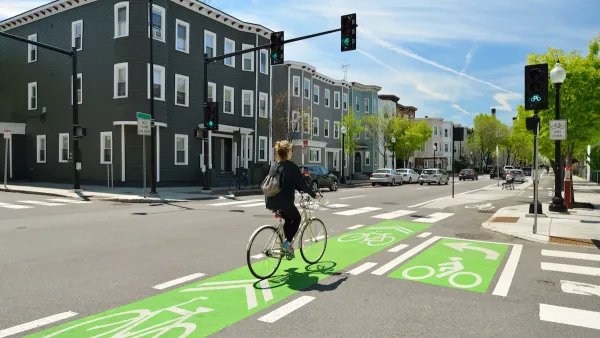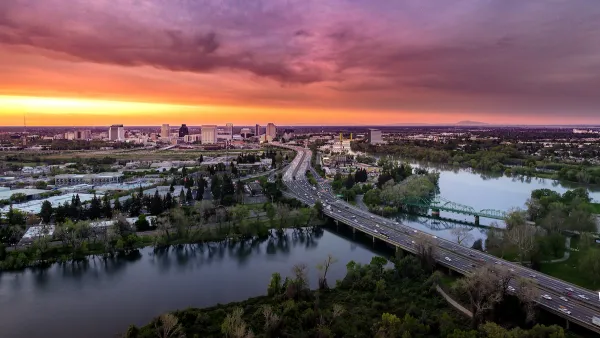With bicycling growing in popularity while driving decreases, should a city install "bicycle-specific traffic signals"? Mary Ebeling of State Smart Transportation Initiatives provides guidance and helpful designs from city transportation officials.
Bike traffic signals accommodate cyclists better than conventional traffic signals. Providing sufficient time to clear the intersection, ensuring activation of the traffic signal, and reducing conflict with motorized traffic are some of the benefits.
Mary Ebeling writes that "(w)hile widely used in Europe and Australia, the U.S has been slow to adopt bicycle-specific traffic signals. Currently 16 cities (including Austin, Denver, Minneapolis, San Francisco, Seattle and Washington D.C) in the U.S. use bicycle-specific traffic signals."
So, what's holding them up?
A major hurdle lies with the fact that they are not incorportated into the federal Manual on Uniform Traffic Control Devices (MUTCD). However, states can authorize them on their own - and the National Association of City Transportation Officials (NACTO) has provided detailed information and guidance for appropriate locations to install bicycle signal heads.
"California relied on data from the bicycle-friendly city of Davs and approved their use in 1998. The State of California approved the use of bicycle traffic signals in 1998, based primarily on data from the City of Davis, California
"The State Smart Transportation Initiative, housed at the University of Wisconsin, promotes transportation practices that advance environmental sustainability and equitable economic development, while maintaining high standards of governmental efficiency and transparency."
Tracy Loew and Elida S. Perez, reporters for USA TODAY, write about an "October, 2012 study commissioned by the Oregon Department of Transportation and the Federal Highway Administration. Last year Oregon lawmakers approved Senate Bill 130, adding bicycle-only signals to the state's list of traffic control devices."
"Chicago officials announced the city's first bicycle-specific traffic signal in August. Atlanta got its first bike signal in October.
The bicycle signal cost $1,000 to install in Salem, OR, according to assistant city traffic manager Tony Martin."
FULL STORY: Increasing bicycle mode share leads to growing need for bicycle-specific traffic signals

National Parks Layoffs Will Cause Communities to Lose Billions
Thousands of essential park workers were laid off this week, just before the busy spring break season.

Retro-silient?: America’s First “Eco-burb,” The Woodlands Turns 50
A master-planned community north of Houston offers lessons on green infrastructure and resilient design, but falls short of its founder’s lofty affordability and walkability goals.

Delivering for America Plan Will Downgrade Mail Service in at Least 49.5 Percent of Zip Codes
Republican and Democrat lawmakers criticize the plan for its disproportionate negative impact on rural communities.

Test News Post 1
This is a summary

Test News Headline 46
Test for the image on the front page.

Balancing Bombs and Butterflies: How the National Guard Protects a Rare Species
The National Guard at Fort Indiantown Gap uses GIS technology and land management strategies to balance military training with conservation efforts, ensuring the survival of the rare eastern regal fritillary butterfly.
Urban Design for Planners 1: Software Tools
This six-course series explores essential urban design concepts using open source software and equips planners with the tools they need to participate fully in the urban design process.
Planning for Universal Design
Learn the tools for implementing Universal Design in planning regulations.
EMC Planning Group, Inc.
Planetizen
Planetizen
Mpact (formerly Rail~Volution)
Great Falls Development Authority, Inc.
HUDs Office of Policy Development and Research
NYU Wagner Graduate School of Public Service





























